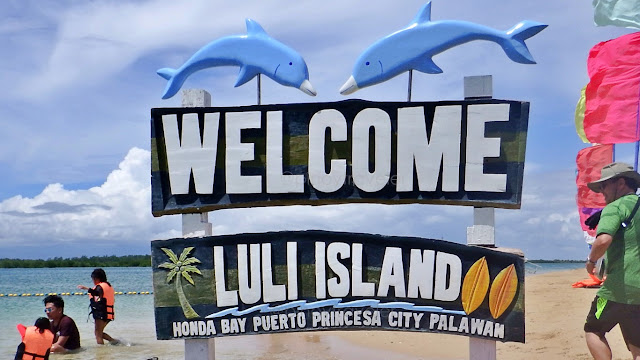Brgy. Arado (Burauen) Delicacies
Learning about our purpose, she told us she might as well show us around one of the neighborhoods where a recent delicacy production was in progress, though not really bukayo, telling us Cheeryl might already arrive by the time we’re done here. We excitedly went for it, of course, so we followed her through the sides of some 5 or 6 houses to reach an open yard – backyard of one, front yard of another, at the same time the pathway to more houses inwards! Voila, we arrived at the area with a long table where some women and a few men were drinking at the same time playing cards. To the side is an open “building” where they were cooking one of their delicacies.
See these pictures:
Well yes, I know what you are thinking hehe… we all thought the same… and I even have a video of this “production process” that could make you folks in the metropolis cringe. You wanna hear more? Ah, just right beside this were the residents’ “pet pigs” hehe. A pig sty if you want me to be blunt about it.
Anyway, the “environment” not withstanding, I did get interested watching them and learning a thing or two about this product and their production processes. This thing they were making is called “calamay” (kuh-luh-my) in two variants – big and small. I learned this batch was for delivery to a client in Naval City (Biliran).
Hey I have encountered a similar delicacy during my tours in the province of Iloilo. I think they also call it Calamay, though I also know that “Calamay” in the Hiligaynon (Ilonggo) Language means “Sugar”. Anyway, this thing is supposed to have been two halves of a ball, as the “mold” being used in early years was half a coconut shell. On this one, it got more interesting to me that they were using carved wood. They look like gigantic “sungka” boards, right?! Interesting!
While I still did not know in what kind of cooking these “calamay” are really used, I do remember that as a child I have tasted (even been fond of) this with stern protestations from my grandmother hehe. I have known then, that this is made out of pure sugarcane juice, cooked until sticky then poured into molds. So I asked that manong in blue where they get their sugarcane juice telling him that I have not heard any big sugarcane juice producers/suppliers in this province or even region. I was surprised (actually really perplexed) to hear his response. He said “asukar man amon gamit” (we use sugar) – meaning not the real/pure cane juice but the already processed end product that is sugar!
All I could say was “ah ok” but in my mind I was really asking ‘so what’s the point’? I mean what’s the point of consumers who buy this when they can buy powdered sugar instead of this, in whatever/wherever they use this? Ah, the manong continued (and he even pointed to me a stack of sacks of sugar) telling me that at times they can even finish 15 sacks of brown sugar in a week.
It’s like this: they boil water in that big cauldron (called kawa), pour sugar, then immediately and continuously stir the ‘concoction’ to the right consistency. That is reason why there are those 3 sticks over the kawa. That’s what they use to continuously stir the syrup. When the right thickness is achieved, the scalding liquid is then poured to those molds and let dry (solidify) for just a few minutes where the shirtless manong pick them in pairs to form a ball. I saw that he would pick them calamay even while still hot and steaming! Yeah, I even asked him “nag-aaso pa, diri mapaso?” He just smiled saying “sanay na”.
Here’s something cute: I got curious as to what were those other things on the cooking area to be used for, so I asked and promptly got replies. That red plastic biscuit pail? That contains brown sugar. The banana? Their snack! They dip those raw into the scalding syrup to cook and sweeten! The juice? Pantulak! The box lined with dyaryo below the table? That is the final ‘resting place’ of the cooled (processed) calamay (from on-top of the table) prior to delivery!
Okay, enough of the Calamay. We started our way out to the street so we could walk towards the house of the konsehal. But along the way, the proud lady told us we can actually peep via the windows of houses we were passing at, to see that some folks are also busy inside doing other processes/delicacies. So I DID with my camera!
The two boys? They are busy wrapping “mazapan”! The little lumps on those white sacks on the table? Yeah, they look like cookies but those are actually already the bukayo in their final processing stage. The red dressed ‘processor’? She’s a little girl about the same age as the boys. The picture below? That is the final bukayo product out on sale by the roadside. Inside each of those coco-shells are pieces of the bukayo lumps. Yes, they taste good!
How about the picture below? THAT is a new building complete with aluminum tables, tiled cooking areas and big new cauldrons provided by the DTI as the associations future production area for all their products. It sits just by the road side and across the house of their Business Manager, the ex-barangay captain and now already konsehal of the town. Hopefully, when this little green house gets operational, their “production personnel” would start wearing shirts hehe. And the children? Am not really sure. Are barangays excluded from Child Labor Laws? If so, I wonder how they are made to understand food preparation hygiene bacteria, shelf-life and so on.
Okay, let’s move on!
For a chronology of stories on this trip, please click the following:










Comments
Post a Comment